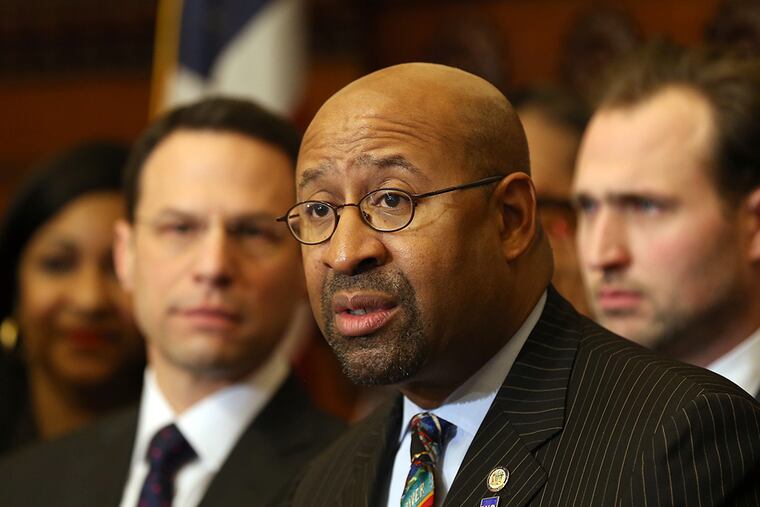Falling out of love with stop-and-frisk
Mayor Nutters controversial plan had some success, but they paid the price, minorities say.

IT WAS A SHOCK when an African-American mayoral candidate - Michael Nutter in 2007 - called for "stop-and-frisk" in what he called "targeted enforcement areas."
Since "high crime" and "high violence" areas are in low-income and minority neighborhoods, cries of racism were inevitable. They came as expected and in 2011 the criticism resulted in a federal class-action lawsuit. A consent decree allowed the American Civil Liberties Union to look over the cops' shoulder into their electronic data base and to produce annual stop-and-frisk statistics.
"The Philadelphia Police Department does not have a 'stop-and-frisk' policy of any type," spokesman Sgt. Eric Gripp tells me. "Frisks only occur once an officer has established reasonable suspicion."
Gripp furnished me with directives that deal with car stops, but nothing specifically detailing pedestrian stops.
What cops see as "reasonable suspicion" can be seen differently by lawyers, academics and community activists.
In 2007, public safety was a top issue for the five men running for mayor, but Nutter was the only one with the guts to call for the tactic, citing success in other cities, such as New York.
As mayor, he implemented it. Keeping in mind the sky-high murder rate, the main thrust was to get guns off the street.
Two things have changed since 2007.
One is that the murder rate has been whacked - from 406 in 2006 to 248 in 2014. Still high, but down a lot.
Another thing that's changed - worsened - is public opinion about cops, looking at the self-inflicted wound of recent accounts of police wrongdoing.
The homicide rate has dropped so much that education rather than guns is a top item among mayoral candidates. They all are sour on stop-and-frisk.
Jim Kenney would "work with the police to end stop-and-frisk responsibly," says his spokeswoman. State Sen. Anthony Williams says "it is neither effective nor efficient, and exacerbates an 'us vs. them' atmosphere."
Doug Oliver would end it, not just in name but also the "mindset." Nelson Diaz would replace the program with "a community policing strategy."
Citing the statistic that "39 percent of the stops are without reasonable suspicion," Lynne Abraham says that's enough "to overturn the mayor's executive order." Milton Street didn't respond before deadline.
In New York, which had been touted as a model for stop-and-frisk, and with crime at record lows, wild hair Mayor Bill De Blasio is ending the tactic. (He actually said he is "ending the overuse" of the tactic, which allows some wiggle room.)
Nutter wanted "stop-and-frisk" because Philadelphia was in a "limited crime emergency." The emergency seems to have subsided.
Almost no guns are impounded due to "stop-and-frisk," according to the report filed earlier this week by the ACLU and the law firm of Kairys Rudovsky Messing & Feinberg. Worse, stop-and-frisk creates the impression minorities are being targeted. I see it as targeting a crime zone rather than a skin tone, but others disagree.
Such as the Rev. Mark Tyler of Mother Bethel A.M.E. Church.
"You'd find it hard to tolerate a policy of stop-and-frisk on the Main Line where middle-class white Americans were stopped," he says. That is his perception.
Here's mine: I get half undressed any time I want to board a plane and I haven't done anything remotely suspicious. Drunk-driving road blocks get set up on highways in even good neighborhoods.
These measures are put in place for a reason.
So was stop-and-frisk, but if the reason was to get illegal guns and it no longer does, and it has alienated the people it was designed to protect, the program ought to end.
If gun crime returns, so can stop-and-frisk.
Phone: 215-854-5977
On Twitter: @StuBykofsky
Blog: ph.ly/Byko